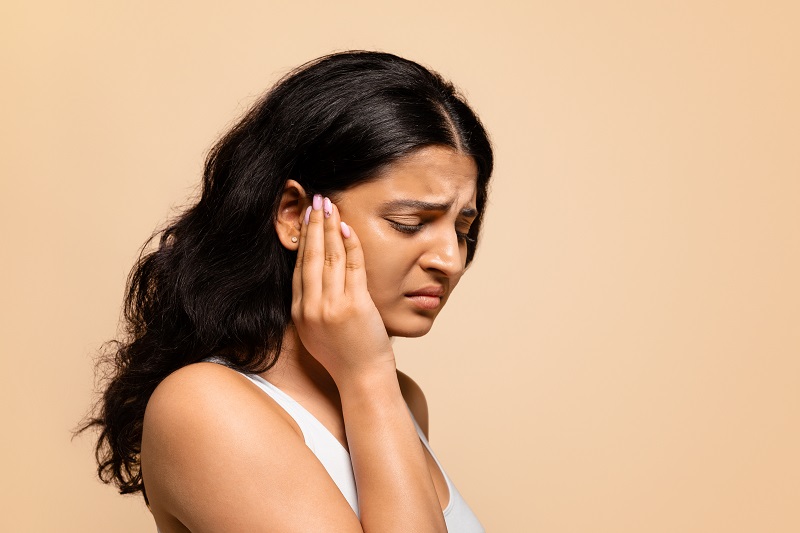
Swimmer’s ear and a middle ear infection are both types of infections, but they affect distinct parts of the ear and have different causes, symptoms, and treatments.
With summer coming, it’s best to be prepared. Here’s how to tell the difference between swimmer’s ear and an ear infection.
Swimmer’s Ear and Ear Infection: Ways to Spot the Difference
1. Location and Cause
Swimmer’s Ear (Otitis Externa):
• Affects the outer ear canal, the tube leading from the outside of the ear to the eardrum.
• Caused by moisture entrapped in the ear canal, often from swimming, bathing, or humid environments, which promotes bacterial or fungal growth. It can also result from irritation (e.g., scratching the ear canal or using cotton swabs).
• Common in swimmers or after frequent water exposure.
Middle Ear Infection (Otitis Media):
• Affects the middle ear, the space behind the eardrum.
• Usually caused by bacteria or viruses following a cold, sinus infection, or respiratory illness, which leads to fluid buildup behind the eardrum. It’s often linked to Eustachian tube dysfunction, which fails to drain fluid properly.
• More common in children due to their shorter, more horizontal Eustachian tubes.
2. Symptoms
Swimmer’s Ear:
• Pain in the outer ear: Pain is often worse when touching, pulling, or pressing on the ear (e.g., the tragus, the small flap in front of the ear canal).
• Itching in the ear canal.
• Swelling and redness of the outer ear or canal.
• Discharge: Clear, pus-like, or foul-smelling fluid from the ear.
• Muffled hearing or feeling of fullness due to swelling or debris in the canal.
• No systemic symptoms: Fever or general illness is rare unless the infection spreads.
• Symptoms are typically one-sided (affecting only one ear).
Middle Ear Infection:
• Ear pain: Deep, aching pain inside the ear, often not affected by touching the outer ear.
• Fever: Common, especially in children.
• Hearing loss: Temporary due to fluid buildup behind the eardrum.
• Ear fullness or pressure: A sensation of the ear being “clogged.”
• Fluid drainage: May occur if the eardrum ruptures (pus or bloody discharge).
• Systemic symptoms: Fatigue, irritability, or feeling unwell, especially in children.
• Balance issues or dizziness in some cases.
• It can affect one or both ears.
3. Risk Factors
Swimmer’s Ear:
• Frequent swimming or water exposure.
• Use of earbuds, hearing aids, or cotton swabs that irritate the ear canal.
• Skin conditions like eczema or psoriasis that affect the ear canal.
Middle Ear Infection:
• Recent upper respiratory infection (cold, flu, or allergies).
• Young age (children under 5 are most prone).
• Exposure to secondhand smoke or crowded environments
4. Diagnosis
Swimmer’s Ear:
• A doctor examines the ear canal with an otoscope, looking for redness, swelling, or discharge.
• Pain when the ear is tugged or pressed is a key indicator.
• No fluid behind the eardrum.
Middle Ear Infection:
• A doctor uses an otoscope to check for fluid or pus behind the eardrum, bulging, or a cloudy eardrum.
• A pneumatic otoscope can test for eardrum movement (reduced movement suggests fluid).
• Tympanometry or other tests may confirm fluid in the middle ear.
5. Treatment
Swimmer’s Ear:
• Ear drops: Antibiotic or antifungal drops with or without steroids to reduce inflammation.
• Keep the ear dry: Avoid swimming or getting water in the ear during recovery.
• Pain relief: Over-the-counter medicines such as acetaminophen or ibuprofen.
• Cleaning: A doctor may clean the ear canal to remove debris.
• Avoid inserting anything into the ear canal.
Middle Ear Infection:
• Observation: Many viral infections resolve independently within a few days, especially in older children or adults.
• Antibiotics: Prescribed for bacterial infections (e.g., amoxicillin) if symptoms are severe or persist.
• Pain relief: Ibuprofen, acetaminophen, or prescribed ear drops for pain.
• Ear tubes: In recurrent cases, especially in children, to improve drainage.
• Avoid water exposure if the eardrum has ruptured.
6. Prevention
Swimmer’s Ear:
• Dry ears thoroughly after swimming or bathing (use a towel or a hairdryer on a low setting).
• Use a swim cap or earplugs when swimming.
• Avoid inserting objects into the ear canal.
• Consider over-the-counter ear drops (e.g., alcohol-vinegar mix) to dry the ear canal after water exposure.
Middle Ear Infection:
• Treat colds or allergies promptly to prevent Eustachian tube blockage.
• Avoid secondhand smoke exposure.
• Breastfeed infants (if possible) and avoid bottle-feeding while lying down.
• Vaccinations (e.g., flu, pneumococcal) can reduce risk.
When to See a Doctor
Swimmer’s Ear: Seek medical care if pain is severe, discharge is persistent, or symptoms worsen despite home care.
Middle Ear Infection: See a doctor for high fever, severe pain, hearing loss, or symptoms lasting more than 2-3 days, especially in children.
Both: If there’s swelling around the ear, facial weakness, or signs of a more serious infection, you should seek immediate care.
Key Differentiator
Touch test: If pulling or pressing the outer ear causes significant pain, it’s likely swimmer’s ear. If pain is deep and unaffected by touching the ear, it’s more likely a middle ear infection.
Fever and systemic symptoms: Middle ear infections often involve fever and feeling unwell, while swimmer’s ear typically does not.